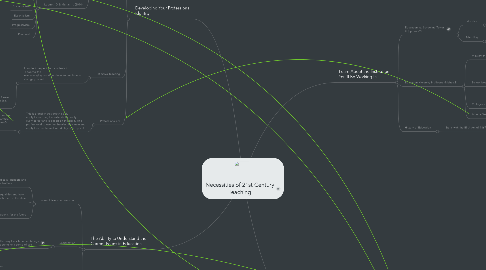
1. Learn About the Institution You'll Be Working In
1.1. Education vs. Schooling Taylor. G (Pp. 76-79)
1.1.1. Education
1.1.1.1. Education can happen anywhere and you can learn anything anytime
1.1.2. Schooling
1.1.2.1. Schooling pertains to the education and preparation of people for further learning in institutions
1.2. Education Hierarchy in Alberta (Maheu.B)
1.2.1. Ministry of Education
1.2.1.1. Minister of Education
1.2.1.2. Deputy Minister of Education
1.2.2. School boards
1.2.2.1. Alberta School Boards Association
1.2.2.2. Public School Boards Association
1.2.2.3. Alberta Catholic School Trustees' Association
1.2.3. Colleges and Universities
1.2.4. Alberta Teachers' Association
1.3. History of Education
1.3.1. Starts with the BNA Act of 1867
1.3.1.1. The beginning of public schooling in the mid 19th century
1.3.1.1.1. Finally in the 1980's minority schools and public schools merged into one provincial system
2. The Ability to Understand the Current Issues in Education
2.1. Current Issues in Education
2.1.1. Relating to all genders and sexual identities
2.1.1.1. This even more so than Culture inequality is a issue of bullying.
2.1.2. Cultural inequalities and how you deal with them in the class
2.1.2.1. It's extremely important in this day in age to conduct yourself with respect for not only your culture but those around you
2.1.3. Preparing students for the future
2.1.3.1. It's important as teachers to continue our learning and always keep up on the newest technologies as that seems to be the way the world is going
2.2. Socialization
2.2.1. The way I which human beings determine a sense of self
2.2.1.1. School plays a pivotal role in this development by learning from not only the teachers but also the other students around them how to socialization
2.2.1.2. This socialization most of the time brings the stigma of the society along with it
2.3. Diversity
2.3.1. How does diversity affect teaching and learning?
2.3.1.1. Challenges
2.3.1.1.1. With any diversity comes challenges
2.3.1.2. Benefits
2.3.1.2.1. Diversity provides us with a wealth of perspectives
2.3.2. How can we better understand diversity?
2.3.2.1. I don't think you should ever have to fully understand and accept another persons culture but instead all students should be inundated with a variety of cultures so that later on in life when to learn about a new one they are able to respond politely and accordingly
3. Developing Your Professional Identity
3.1. Teaching Theories
3.1.1. Behavior management M. Manning & K. Bucher (Pp.47-173)
3.1.1.1. Dreikurs: Democratic Teaching and Management
3.1.1.1.1. I believe that the classroom is a Democratic community and therefore should be treated as such to have productive students
3.1.1.2. Skinner: Behaviour Modification
3.1.1.3. Canter: Assertive Discipline
3.1.1.4. Coloroso: Inner Discipline
3.1.1.5. Kohn: Beyond Discipline
3.1.2. Philosophies Loomis, D & Martin, K. (2014)
3.1.2.1. Social Reconstructionism
3.1.2.1.1. Not only should a class be a democratic community but students should know that they are agents of change and should act accordingly
3.1.2.2. Existentialism
3.1.2.3. Essentialism
3.1.2.4. Progressivism
3.1.2.5. Perennial
3.2. Reflective Teaching
3.2.1. In order to expect your students to adapt to this ever changing world you have to continue to change yourself.
3.2.1.1. "When someone reflects-in-action, he becomes a researcher in the practice context. He is not dependent on the categories of established theory and technique, but constructs a new theory of the unique case. His inquiry is not limited to a deliberation about means which depends on a prior agreement about ends. He does not keep means and ends separate, but defines them interactively as he frames a problematic situation." Peters.J.M (pp. 90)
3.3. Professionalism
3.3.1. This is a quality that doesn't only apply to teaching but extends to nearly every career and is based on the ability of a professional to use the theories they learn and apply them in the real world. Taylor.G.(pp.72)
3.3.1.1. Professionalism is a necessary quality in teaching because it helps them have a sound theoretical base to become a reflective teacher. Taylor.G. (pp.72)
